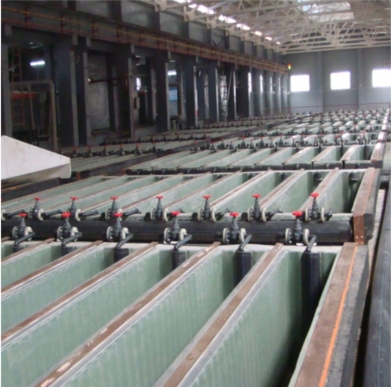Lead is an important corrosion-resistant nonferrous metal with a low melting point, strong corrosion resistance, and is not easily penetrated by X-rays, gamma rays, etc. It has good plasticity and is often used to make plates or pipes. It is widely used in chemical, cable, battery, radioactive protection and other fields. At present, the electrolytic lead purification mainly adopts the method proposed by A.G.Befs in 1901, that is, electrolysis of lead fluoride (PbSiF6) and fluoride silicic acid (H2SiF6) or semi-refined lead after primary pyrolysis. The goal of lead electrolysis equipment is to obtain high-grade lead and recover it from bismuth and rare precious metals.
Lead metallurgy is the best carrier for silver production: the general lead capture recovery rate for gold and silver is above 95%, so the recovery of gold and silver is directly related to the production status of lead. At present, about 80% of the world's original crude lead production is carried out by the traditional sintering-blast furnace method. The traditional method is relatively mature, complete and reliable, but there are problems such as low SO2 content in sintering flue gas, difficulty in recovery, and high blast furnace smelting cost. In response to this problem, my country's metallurgical industry has carried out a new lead smelting technology research. There are two methods for purifying crude lead, one is pyrolysis and the other is electrolysis. It is generally believed that the electrolysis method has a good separation effect on silver, gold, bismuth and antimony, a high recovery rate for lead, silver, etc., and has a good working environment and a high level of mechanization and automation.

The result of electrolytic refining is: the cathode lead produced is of high grade, and a layer of anode mud appears at the residual pole. After the cathode lead is cleaned, it is smelted and oxidized and purified to remove arsenic, antimony and tin, and finally made into lead ingots. Part of it is used to cast the starting electrode. After the anode mud is removed, the residual pole is melted and cast into an anode. The anode mud is leached and then treated, and valuable metals such as bismuth, gold, and silver can be extracted from the anode sludge.
Lead electrolysis equipment can not only obtain lead with higher purity, but also has a good recovery effect on precious metals in crude lead, and can also improve the working environment.